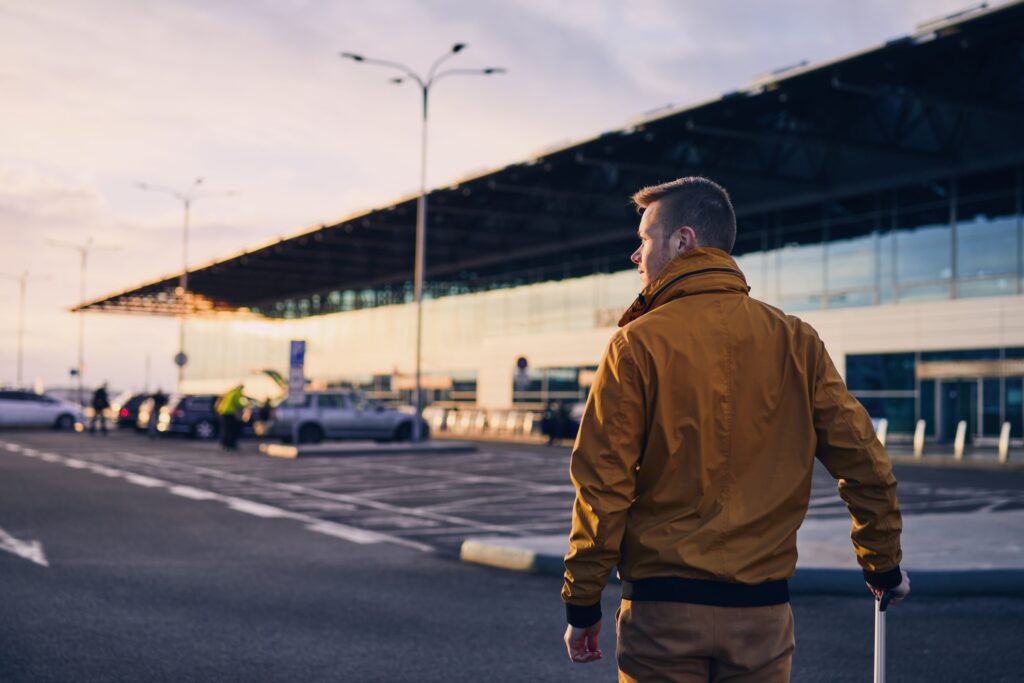Do you ever wonder what happens behind closed doors at the airport? From checking in to take-off, the inner workings of airports remain a mystery to many travelers. From the security checkpoints to the air traffic control towers, there is a whole lot of activity that goes on in the background. So, what goes on behind the scenes at an airport? Keep reading to find out.
Aircraft Ground Power Unit

An aircraft ground power unit (GPU) is an essential part of what goes on behind the scenes at an airport. It is a device used to provide electrical power for aircraft while they are parked on the ground and not running their own engines. This allows them to be powered up before takeoff, as well as during maintenance or repairs that require electricity while the plane remains stationary. GPUs can range in size from small portable units carried by technicians to large truck-mounted models used by heavy maintenance teams with specialized equipment. They use either 110/115 or 220/230V AC single phase current and deliver anywhere between 15kVA and 3MVA depending on the type of aircraft being serviced. In order to ensure safety, GPU operators must follow strict checklists prior to starting up any unit and verify it is functioning properly before connecting it to an aircraft’s electrical system.
Security Checks and Baggage Screening
Security checks and baggage screening are integral elements of the process that goes on behind the scenes at an airport. Security checks involve physical screenings of passengers as well as their belongings before they can enter secure areas such as gates, departure lounges, and boarding areas. Baggage screening is a critical component of this security process, which usually involves x-raying luggage before it is allowed to be loaded onto the aircraft. At many airports, all travelers must go through metal detectors or full body scanners in order to pass security checkpoints. This can include removing shoes and belts, emptying pockets, and sometimes taking off jackets or other outerwear items for further inspection. The machines used for these scans detect any potential weapons that could be concealed on a passenger’s person or in their personal belongings. If anything suspicious is detected during the scan, travelers may need to undergo additional screenings by personnel from the Transportation Security Administration (TSA).
Aircraft Servicing and Repair

Aircraft servicing and repair is one of the most important activities that take place behind the scenes at airports. This activity involves a variety of tasks including aircraft maintenance, inspections, repairs, modifications, troubleshooting, and testing. Aircraft technicians must ensure that all components are functioning correctly prior to take-off. This includes checking for any potential safety hazards or defects in the plane’s systems as well as making sure it meets all regulatory standards set by aviation authorities such as FAA (Federal Aviation Administration). Additionally, they may also be responsible for performing visual inspections on the exterior of planes to identify any signs of wear or damage that could affect its performance during flight.
Air Traffic Control Systems
Air traffic control systems are the backbone of modern aviation, and they play a crucial role in keeping air travel safe. Air traffic control (ATC) is responsible for separating aircraft to prevent them from colliding with each other or objects on the ground. ATC systems use radar and communications technology to monitor all aircraft within a given airspace, identify their position, altitude, speed, and direction of flight as well as any potential conflicts between different flights. This information is then used by controllers to ensure safe separation between these aircraft and provide pilots with clear instructions about where they should fly. In addition to using radar-based tracking systems, ATC also relies heavily on air traffic controllers who are able to oversee multiple planes simultaneously while directing them through complex flight paths safely. Controllers must have an excellent understanding of local weather conditions in order to direct flights around storms or turbulence that could put passengers at risk if not avoided properly. They must also be familiar with airport layouts so they can manage operations efficiently when there are many planes taking off and landing at once while also providing guidance on taxiing routes for individual flights.
Airport Management Teams
Airport management teams are the backbone of any airport. This team consists of individuals from a variety of departments, each with their own area of expertise and responsibility. The team is responsible for overseeing the day-to-day operations at an airport, ranging from safety and security to customer service and air traffic control. Airport management teams work closely together to ensure that all aspects of an airport’s operations run smoothly and efficiently.
Overall, airports are complex operations that require precise coordination and planning in order to run smoothly. What goes on behind the scenes at an airport is essential to ensure safety, efficiency, and a pleasant experience for travelers.

























